The six tapes below are the most common formats, please see the comprehensive list below for all the video tape formats we can transfer.
We transfer the following video tapes to Blu-ray Discs, DVD, HDD, SSD, USB Sticks and Memory Cards.
Below are the most common types of video cassettes we transfer to digital format.


- VHS
- S-VHS
- VHS-C
- S-VHS-C
- Betamax
- Video8 / Hi-8 / Digital 8
- Mini-DV (including HDV)
- Micro-MV
- Video 2000 (VCC)
- U-matic S
- DVCAM
- LaserDisc
- DVD
- CD Video
- Video CD
- Mini DVD
- HDD
- SSD
- USB Stick and Memory Cards
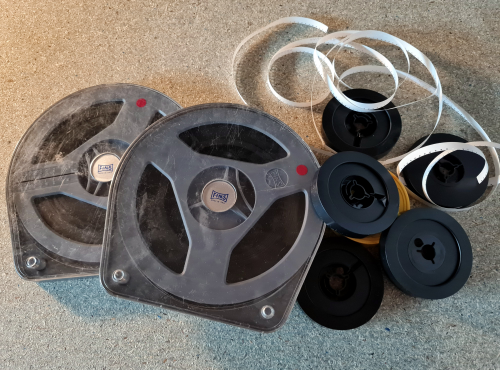
We can transfer your Cine to Blu-ray, DVD and other media too! Standard 8mm; Super 8, (with or without sound) and 16mm (with or without sound).
Films are first chemically cleaned and are scanned using the latest frame by frame scanning equipment to ensure the best possible reproduction. They are then digitally 'cleaned' and further enhanced by balancing the brightness, contrast, colour and adding video stabilisation if necessary. Prices include any amount of repairs, e.g., re-splicing of films.
(Please note the 'Format-Shifting' Rules in the Terms and Conditions if material is pre-recorded).

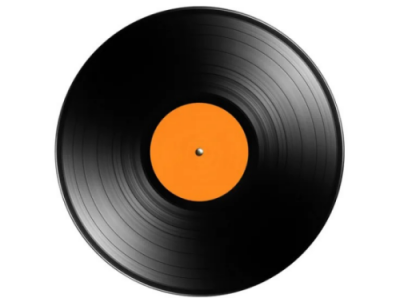
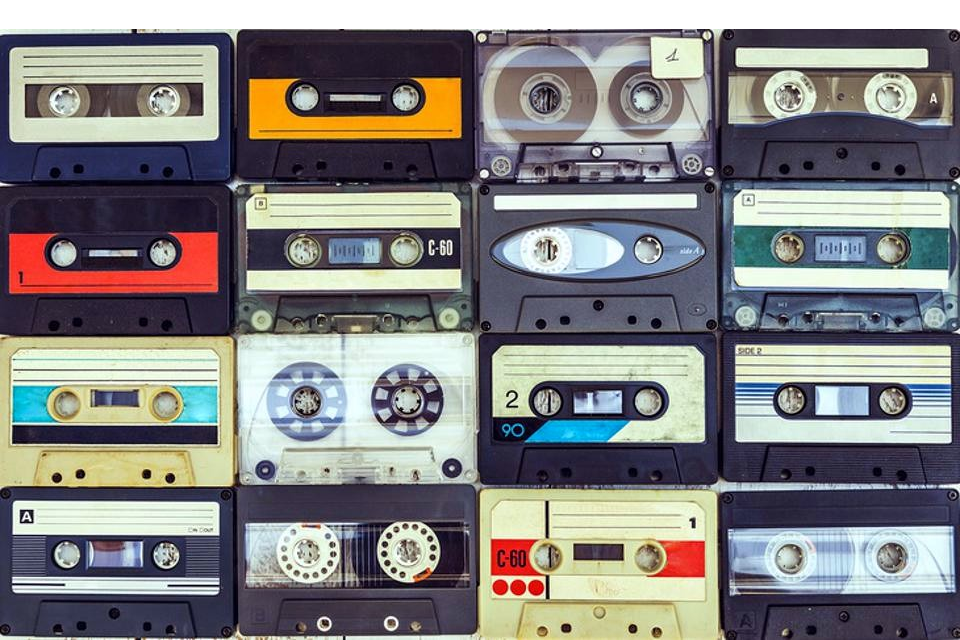
We can transfer your Vinyl, Audio Cassettes, Reel to Reel, Micro-cassette tapes and Mini-Discs to CD and other media.
(Please note the 'Format-Shifting' Rules in the Terms and Conditions if material is pre-recorded).
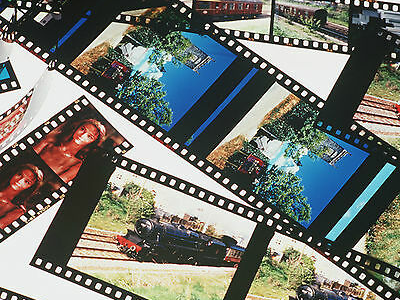
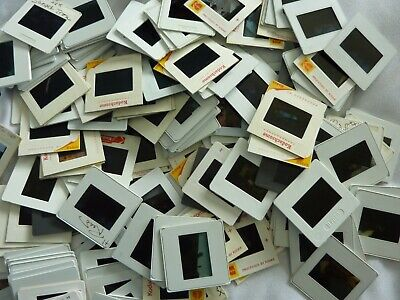
We can scan and transfer your Slides / Photos / Negatives as Positives and Kodak Disc Negatives as Positives to CD / DVD / Blu-ray Disc(s) and other media for you to enjoy on your PC (and some DVD / Blu-ray players). You can then print and / or email your images.
We can also make a 'slideshow' of your favourite Slides / Photos / Negatives as Positives on Blu-ray Discs, DVD and other media.
Imagine being able to show your family and friends your photo / slide collection on your TV for everyone to enjoy. This is more enjoyable than handing round individual photos, especially with the addition of music, titles, narration and sound effects if required!
U-matic
This was an analogue recording videocassette format first shown by Sony in prototype in October 1969, and introduced to the market in September 1971. It was among the first video formats to contain the videotape inside a cassette, as opposed to the various reel-to-reel or open-reel formats of the time.
U-matic is also available in a smaller cassette size, officially known as U-Matic S. Much like VHS-C, U-Matic S was developed as a more portable version of U-Matic, to be used in smaller-sized S-format recorders. We can transfer footage from U-matic S videocassettes to DVD/Blu-ray.
Video 2000 (VCC)
(Or V2000; also known as Video Compact Cassette, or VCC) was a consumer videocassette system and analogue recording standard developed by Philips and Grundig to compete with JVC's VHS and Sony's Betamax video technologies. Distribution of Video 2000 products began in 1979 and ended in 1988; they were marketed exclusively in Europe, Brazil, and Argentina.
Philips named the videotape standard Video Compact Cassette (VCC) to complement their landmark Audio Compact Cassette format introduced in 1963, but the format itself was marketed under the trademark Video 2000.
Video 2000 succeeded Philips's earlier "VCR" format and its derivatives (VCR-LP and Grundig's SVR). Although some models and advertising featured a "VCR" badge based on the older systems' logo, Video 2000 was an entirely new (and incompatible) format that incorporated many technical innovations. Despite this, the format was not a major success and was eventually discontinued, having lost out to the rival VHS system in the videotape format war. We can transfer Video 2000 footage to DVD/Blu-ray.
Betamax
(Also called Beta, and referred to as such in the logo) was a consumer-level analog videocassette magnetic tape recording format developed by Sony, released in Japan on May 10, 1975.
VHS
VHS tapes are bulky and as with all video tapes they can lose quality every time they are played. Save your memories from fading by having your VHS tapes transferred to DVD/Blu-ray.
Super VHS (S-VHS)
Super VHS brought an improvement in quality.
Compact VHS (VHS-C) (and S-VHS-C)
One of the earliest camcorder formats. With the use of an adaptor they could be played in your full size VHS player.
Digital VHS (D-VHS)
Digital video recordings made onto special VHS tape. Very rare.
Video 8 , Hi-8 and Digital 8
The most popular of camcorder formats. We transfer these tapes every day to the convenience of DVD/Blu-ray.
Mini DV
Small in size and with superb digital quality. Why not take the next step and transfer your Mini DV footage to DVD?
MicroMV
Sony's tiny video cassette camcorder system.
DVCAM
In 1996 Sony introduced its own professional version of DV called DVCAM.
DVCAM uses locked audio, which prevents audio synchronization drift that may happen on DV if several generations of copies are made.
When recorded to tape, DVCAM uses 15 μm track pitch, which is 50% wider compared to baseline. Accordingly, tape is transported 50% faster, which reduces recording time by one third compared to DV. Because of the wider track and track pitch, DVCAM has the ability to do a frame accurate insert tape edit, while DV may vary by a few frames on each edit compared to the preview. Cassette sizes available are Large, Standard and Mini and are labelled DVCAM.
LaserDisc or (LD)
This was a home video format and the first commercial optical disc storage medium, initially licensed, sold, and marketed as MCA DiscoVision (also known as simply "DiscoVision") in North America in 1978.
Although the format was capable of offering higher-quality video and audio than its consumer rivals, the VHS and Betamax videocassette systems, LaserDisc never managed to gain widespread use in North America, largely due to high costs for the players and video titles themselves and the inability to record TV programming. It also remained a largely obscure format in Europe and Australia. However, it was much more popular in Japan and in the more affluent regions of South East Asia, such as Hong Kong, Malaysia and Singapore, being the prevalent rental video medium in Hong Kong during the 1990s. Its superior video and audio quality did make it a somewhat popular choice among videophiles and film enthusiasts during its lifespan.
The technologies and concepts behind LaserDisc are the foundation for later optical disc formats, including Compact Disc, DVD, and Blu-ray Disc.
CD Video
(Also known as CDV, CD-V, or CD+V) was a format introduced in 1987 that combined the technologies of compact disc and Laserdisc. CD-V discs were the same size as a standard 12 cm audio CD, and contained up to 20 minutes worth of audio information that could be played on any audio CD player. It also contained up to 5 minutes of analog video information plus digital CD-quality sound, which could be played back on a newer laserdisc player capable of playing CD-V discs. One of the first laserdisc players that could play CD-V discs as well was the Pioneer CLD-1010 from 1987. Though it was a CD-based format, CD Video was never given a rainbow book designation.
CD Video discs have a distinctive gold color, to differentiate them from regular silver-colored audio CDs. This is a characteristic that would later be replicated in HVD, a more advanced disc format.
A similar version of CD Video called Video Single Disc (VSD) was also released. It was the same as CD Video, but it only had the analog video track (occupying the whole storage space of the disc) and no audio CD tracks.
CD Video was targeted toward teenagers who watched music videos on MTV. However, few of them were familiar with Laserdiscs, and far fewer owned CDV compatible players. Buying a costly new player was not an option just for the minor use of playing a single music video that could be taped with a VCR.
The term "CD Video" and its logo were also used on full-size (8- and 12-inch) PAL LaserDiscs with digital audio (for movies as well as for music titles), to distinguish them from the previous LaserVision format with analogue audio and, presumably, to leverage the consumer recognition of the successful CD Audio format. In NTSC territories however, use of the term LaserDisc continued and the CD Video branding was never used.
Though CD Video lasted only a few years in the marketplace and began disappearing by 1991, its legacy would live on with the all-digital MPEG-based Video CD format, which came out a few years later in 1993.
Video CD
Before the advent of DVD and Blu-ray, the Video CD (abbreviated as VCD, and also known as View CD, Compact Disc digital video) became the first format for distributing films on standard 120 mm (4.7 in) optical discs. The format is a standard digital format for storing video on a compact disc. VCDs are playable in dedicated VCD players, most DVD and Blu-ray disc players, PCs, and some video game consoles.
The VCD standard was created in 1993 by Sony, Philips, Matsushita, and JVC and is referred to as the White Book standard.
DVD
DVD (abbreviation for Digital Versatile Disc or Digital Video Disc) is a digital optical disc storage format invented and developed in 1995 and released in late 1996. The medium can store any kind of digital data and is widely used for software and other computer files as well as video programs watched using DVD players. DVDs offer higher storage capacity than compact discs while having the same dimensions.
Prerecorded DVDs are mass-produced using molding machines that physically stamp data onto the DVD. Such discs are a form of DVD-ROM because data can only be read and not written or erased. Blank recordable DVD discs (DVD-R and DVD+R) can be recorded once using a DVD recorder and then function as a DVD-ROM. Rewritable DVDs (DVD-RW, DVD+RW, and DVD-RAM) can be recorded and erased many times.
DVDs are used in DVD-Video consumer digital video format and in DVD-Audio consumer digital audio format as well as for authoring DVD discs written in a special AVCHD format to hold high definition material (often in conjunction with AVCHD format camcorders). DVDs containing other types of information may be referred to as DVD data discs.
HD DVD
HD DVD (short for High Definition Digital Versatile Disc) is an obsolete high-density optical disc format for storing data and playback of high-definition video. Supported principally by Toshiba, HD DVD was envisioned to be the successor to the standard DVD format.
On February 19, 2008, after a protracted format war with rival Blu-ray, Toshiba abandoned the format, announcing it would no longer manufacture HD DVD players and drives. The HD DVD Promotion Group was dissolved on March 28, 2008.
The HD DVD physical disc specifications (but not the codecs) were used as the basis for the China Blue High-definition Disc (CBHD) formerly called CH-DVD.
Because all variants except 3× DVD and HD REC employed a blue laser with a shorter wavelength, HD DVD stored about 3.2 times as much data per layer as its predecessor (maximum capacity: 15 GB per layer compared to 4.7 GB per layer).
Blu-ray
Blu-ray Disc (BD), often known simply as Blu-ray, is a digital optical disc data storage format. It was designed to supersede the DVD format, and is capable of storing several hours of video in high-definition (HDTV 720p and 1080p). The main application of Blu-ray is as a medium for video material such as feature films and for the physical distribution of video games for the PlayStation 3, PlayStation 4, and Xbox One. The name "Blu-ray" refers to the blue laser (which is actually a violet laser) used to read the disc, which allows information to be stored at a greater density than is possible with the longer-wavelength red laser used for DVDs.
The plastic disc is 120 millimetres (4.7 in) in diameter and 1.2 millimetres (0.047 in) thick, the same size as DVDs and CDs.[5] Conventional or pre-BD-XL Blu-ray Discs contain 25 GB per layer, with dual-layer discs (50 GB) being the industry standard for feature-length video discs. Triple-layer discs (100 GB) and quadruple-layer discs (128 GB) are available for BD-XL re-writer drives.
High-definition (HD) video may be stored on Blu-ray Discs with up to 1920x1080 pixel resolution, at 24 progressive, or 50/60 interlaced, frames per second. DVD-Video discs were limited to a maximum resolution of 480p (NTSC, 720x480 pixels) or 576p (PAL, 720x576 pixels).[7] Besides these hardware specifications, Blu-ray is associated with a set of multimedia formats.
The BD format was developed by the Blu-ray Disc Association, a group representing makers of consumer electronics, computer hardware, and motion pictures. Sony unveiled the first Blu-ray Disc prototypes in October 2000, and the first prototype player was released in April 2003 in Japan. Afterwards, it continued to be developed until its official release on June 20, 2006, beginning the high-definition optical disc format war, where Blu-ray Disc competed with the HD DVD format. Toshiba, the main company supporting HD DVD, conceded in February 2008, and later released its own Blu-ray Disc player in late 2009. According to Media Research, high-definition software sales in the United States were slower in the first two years than DVD software sales. Blu-ray faces competition from video on demand (VOD) and the continued sale of DVDs. Notably, as of January 2016, 44% of U.S. broadband households had a Blu-ray player. For playback of 4K content, Blu-ray has been superseded by Ultra HD Blu-ray.
Damaged Tapes
Snapped tape? Damaged cassette housing? We endeavour to make repairs to most formats. Options include re-housing of tapes and or splicing of damaged sections.
Overseas Conversions
Our discs are produced in the PAL system and are region zero. We can convert NTSC tapes to PAL DVD. Share your worldwide family memories!
Tape Repairs
We offer a tape repair service for only £8.50 per tape. All video and audio cassettes and Reel to Reel tape repairs including re-splicing and cassette rehousing.
Tape Deterioration
Until recently, the popular belief was that information stored on audio and videotape would be permanent. Magnetic tape has become the archival storage medium of our age. In the short term, magnetic tape has allowed us to save and replay history at will, whether a major national event or important personal moments.
Now we realise that with audio and videotape there is no long term. Magnetic media has a very limited life span and priceless sounds and images are in danger of being lost forever.
Audio and video collections require specific care and handling to ensure that the recorded information will be preserved. Special storage environments are necessary to ensure that the recorded information is preserved for longer than 10 years. For information that must be preserved indefinitely, periodic transcription from old media to new is necessary, not only because the media are unstable, but also because the recording technology will become obsolete.
The magnitude of the problem of magnetic tape deterioration is just starting to be realized. Virtually all of the magnetic tape ever recorded older than as little as 10 years may be in serious jeopardy. The threat comes from several sources, but the largest threat is chemical in nature, coming from the breakdown of the binder, or glue, that holds the magnetic particles to the polyester base of the tape. As this hydrolysis process occurs, (sometimes known as "Sticky Shed Syndrome"), the tape often gets coated with a tenacious adhesive that makes it extremely difficult to play. In some cases the problem can be so severe that the magnetic material literally falls off or sheds from the base leaving a pile of dust and clear backing. The problem of hydrolysis has been known for some time, but the extent of both the problem and catastrophic effect it has on magnetic media is just now reaching widespread public visibility.
At risk is virtually the entire inventory of recorded media, from master audio recordings of symphonies to videotape recordings of the news gathered over the last 40 years. Virtually our entire audio and visual heritage from the 1940's to the 1980's is in serious jeopardy. No tape is safe from the multiple threats that vary from accidental erasure and physical loss due to fire and flood, to the slow disappearance of the machines that are required to replay the tapes. Coupled with Sticky Shed Syndrome, the threat is far greater than anticipated. Realistically, some of the vast inventory of tapes are of little value being copies of other materials, but many others are masters, original recordings, that cannot be readily duplicated. And the amount of tapes needed to be restored is so huge, that it would take decades, even if facilities, techniques, and funding were readily available.
Facing the challenge
The question is: "What to do to face this problem that has been described as 'a tidal wave at our shores'?"
The problem is immense indeed. Over the last few decades more than 10 billion blank audio tapes were sold worldwide. Assuming that only one percent of these tapes contains really unique recordings (like family events, interviews, meetings, live recordings etc.) we are talking about 100 million audio tapes that are in potential jeopardy. At an average length of 70 minutes per audio tape 87.5 million CDs would be required to save the entire collection and about 20,000 man-years to do the actual conversion work. This is assuming that all tapes can still be recovered and conversion is to a CD. Given the 10 year period in which this needs to happen it is obvious that there is a major challenge ahead to preserve our legacy recordings.
There are various ways to preserve unique audio and video data. For information that must be preserved indefinitely, periodic transcription from old media to new is necessary, not only because the media are unstable, but also because the recording technology will become obsolete.
Converting audio tapes to CD and videotapes to DVD using a reputable transfer company is a most viable and cost effective option to save recordings for consumers. At Digital Transfer we can preserve your precious recordings.


We can scan your documents and books* all sizes up to A3 including foolscap. Documents including letters etc., can then either be transferred as either PDF or jpeg to data CD/DVD, memory stick or paper printed, or a combination of all three!
Books can be transferred as either PDF or jpeg to data CD/DVD, memory stick or produced as a flipbook video where the 'pages' are turned automatically!
*Subject to copyright. The material must either be out of/not subject to copyright, or you are the copyright owner, or you can provide written proof of permission to reproduce said documents and books from the copyright owner.